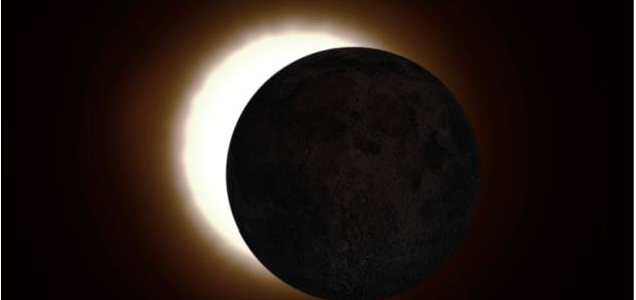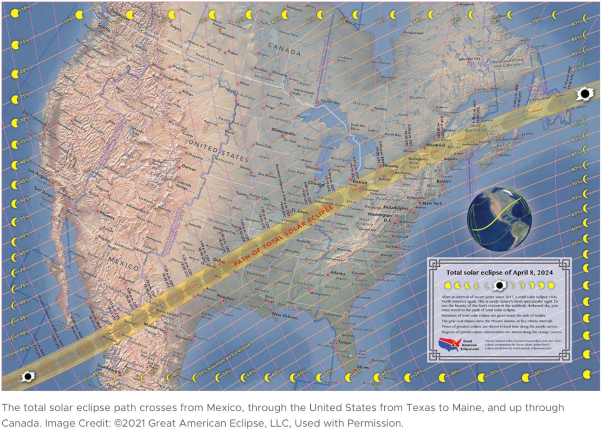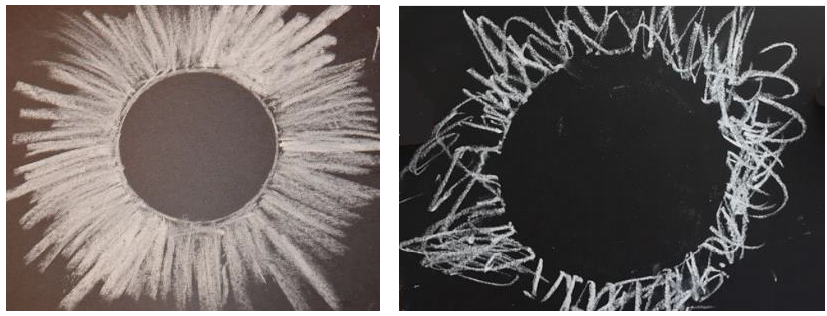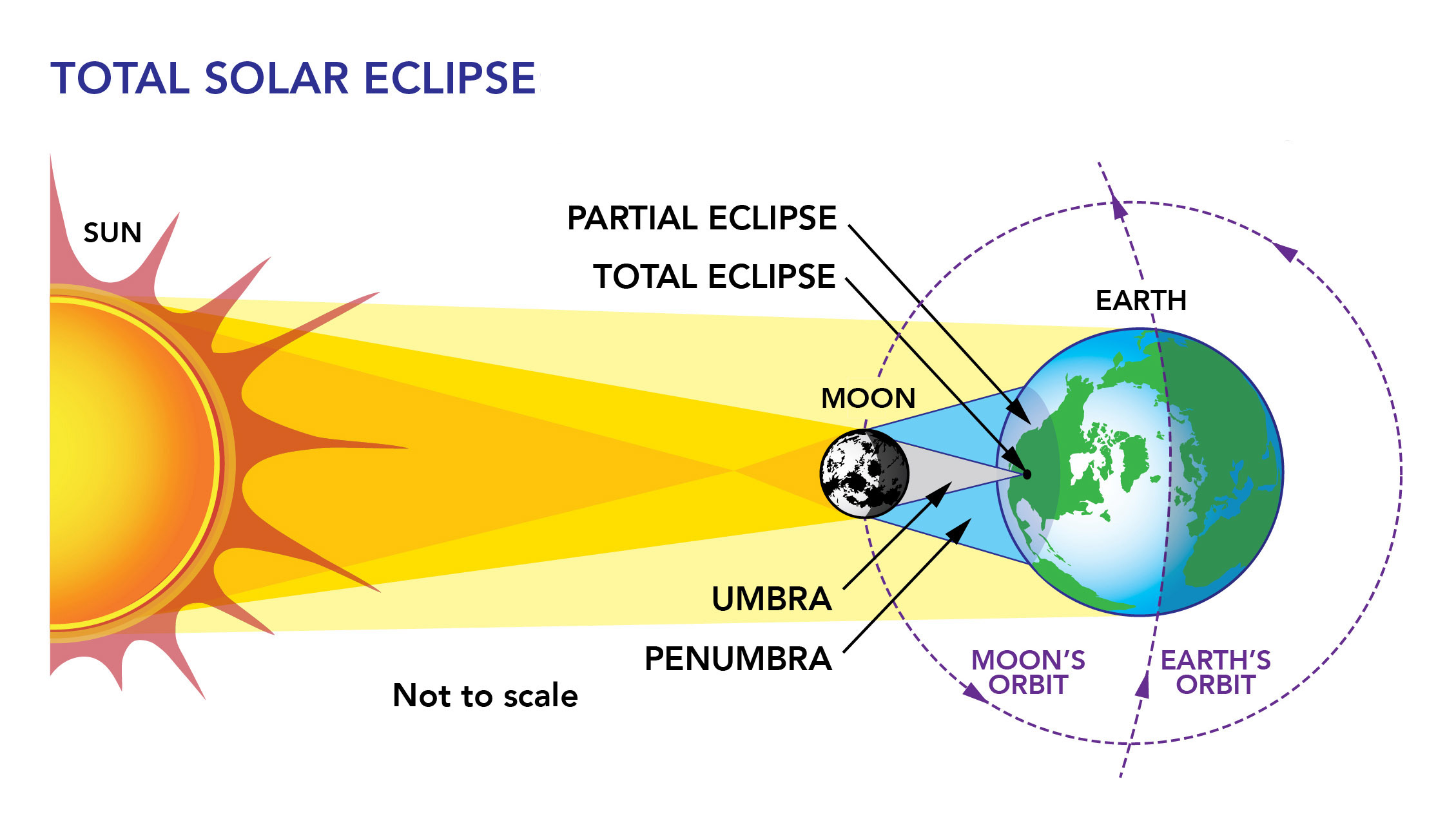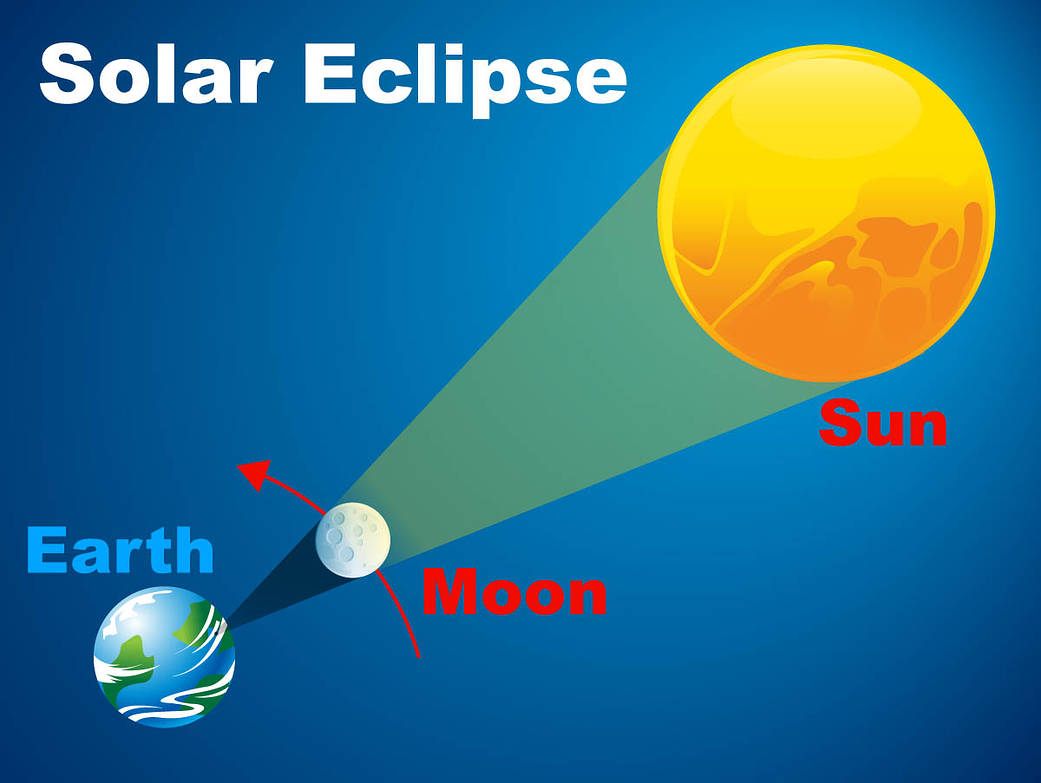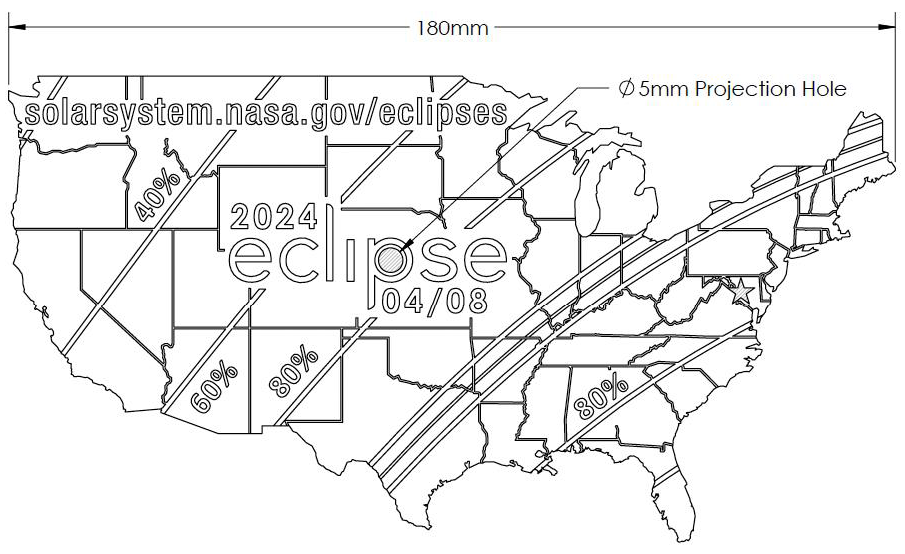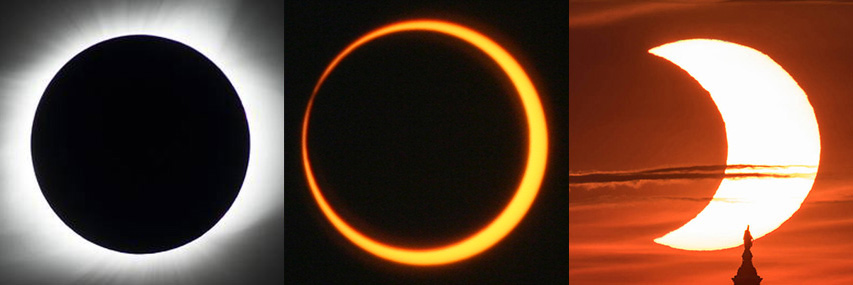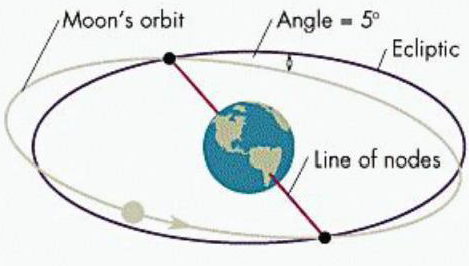Mini Lesson/Activity
How Will Different Locations in the US Experience the 2024 Solar Eclipse?
Overview
Students will analyze a projected map of the April 8, 2024 total solar eclipse across the US, with an accompanying data table of the locations and times, to explain how people in different locations experience a solar eclipse.
Student Directions
Remember to never look directly at the Sun without proper safety equipment.
Materials:
Use one of the following options for answering questions.
- How Will Different Locations on Earth Experience a Solar Eclipse? Google Form
- How Will Different Locations on Earth Experience a Solar Eclipse? Google Doc
- How Will Different Locations on Earth Experience a Solar Eclipse? PDF
A solar eclipse occurs when the Moon is between the Sun and Earth, and with the right conditions, the Moon casts a shadow on Earth’s surface. The phenomenon of a solar eclipse is possible because even though the Sun is about 400 times larger than the Moon, the Sun is about 400 times farther away from Earth than the Moon is. This ratio of the size and distance of these objects makes them appear the same size in the sky.
The Moon is a little over 25% the size of Earth. Therefore, during a solar eclipse, the shadow of the Moon only covers a small portion of Earth. We call the path of the Moon’s shadow, as it moves across Earth, the “path of totality.”
During a solar eclipse, people in locations in the path of totality can experience 2-4 minutes when the shadow completely blocks out the light from the Sun. The length of time may not be the same for every location. We call this a total solar eclipse. This is the only time when viewers can remove their solar eclipse glasses.
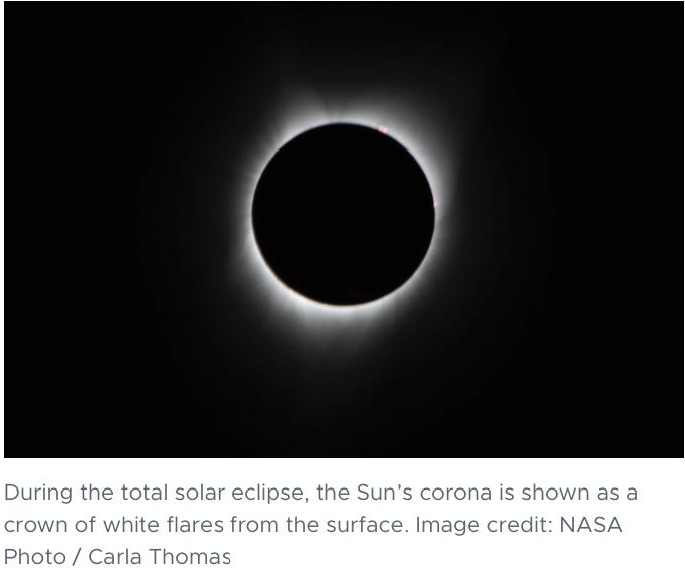
People who are outside the path of totality, will see a partial solar eclipse, where only part of the Moon’s shadow covers the Sun. Solar eclipse glasses are needed to view a partial solar eclipse. People in different locations will experience different percentages of coverage of the Sun by the Moon’s shadow, as seen in the figure below.
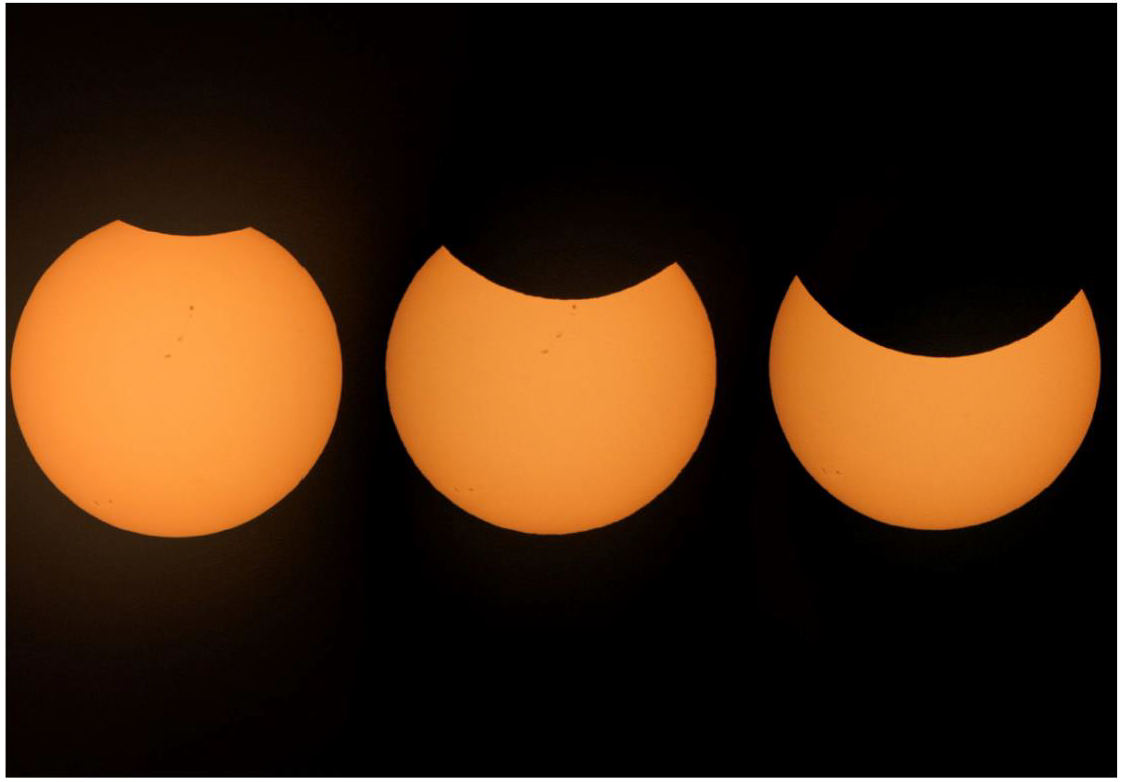
Steps:
-
Examine the map of the United States that shows how each location will experience the April 8, 2024 solar eclipse.
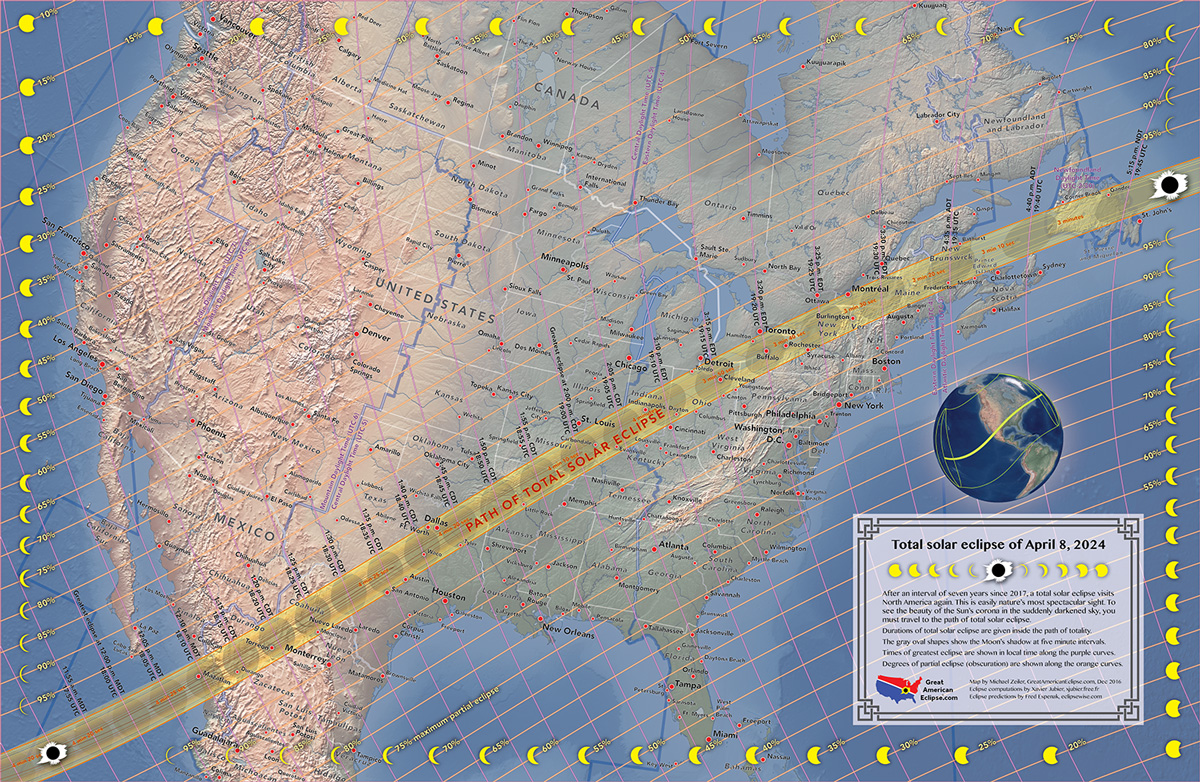
The path of the eclipse continues from Mexico, entering the United States in Texas, and traveling through Oklahoma, Arkansas, Missouri, Illinois, Kentucky, Indiana, Ohio, Pennsylvania, New York, Vermont, New Hampshire, and Maine., Image Credit: copyright 2021 Great American Eclipse, LLC, Used with Permission., https://solarsystem.nasa.gov/eclipses/2024/apr-8-total/where-when/
Map Key:- The dark paths across the map are where the largest area of the Sun will be covered by the Moon. People in these paths will experience either an annular or total solar eclipse. For a total solar eclipse, the ovals are called the umbra and create the path of totality.
- On the map, the ovals contain times inside corresponding to the shape of the Moon’s shadow cast at that time during the eclipse.
- Also within the dark paths are duration contours. These delineate the length of time annularity or totality will last. The closer to the center of the solar eclipse path, the longer it will last. For the total path, times range up to 4 minutes.
- Outside the eclipse paths, the map displays contours of obscuration, or percentage of the Sun’s area covered by the Moon. Readers can trace the lines to percents printed along the left and top of map for the 2023 annular solar eclipse and along the right and bottom for the 2024 total solar eclipse. Notice how the 2024 total solar eclipse has a higher maximum percentage because the Moon will completely cover the Sun’s surface.
- Examine the data table that accompanies the data from the map. For example, if you live in Dallas, TX:
- The partial eclipse begins at 12:23 pm Central Daylight Time (CDT). The Moon’s shadow will start to cover the Sun.
- The Sun will become more and more obscured until totality begins at 1:40 pm CDT.
- As you experience totality, the sky gets darker and darker until 1:42 pm CDT, at the maximum totality, which is the moment that you would experience the most darkness.
- Totality ends at 1:44 pm CDT, when the Moon’s shadow moves away from you.
- You would then experience a partial solar eclipse until the partial ends 3:02 pm CDT.
-
Safety Reminder! Only viewers in the path of totality will be able to remove their solar eclipse glasses, and only during totality, which only lasts for about 4 minutes in most locations. The rest of the time observers will have to wear their solar eclipse glasses to view the partial eclipse.
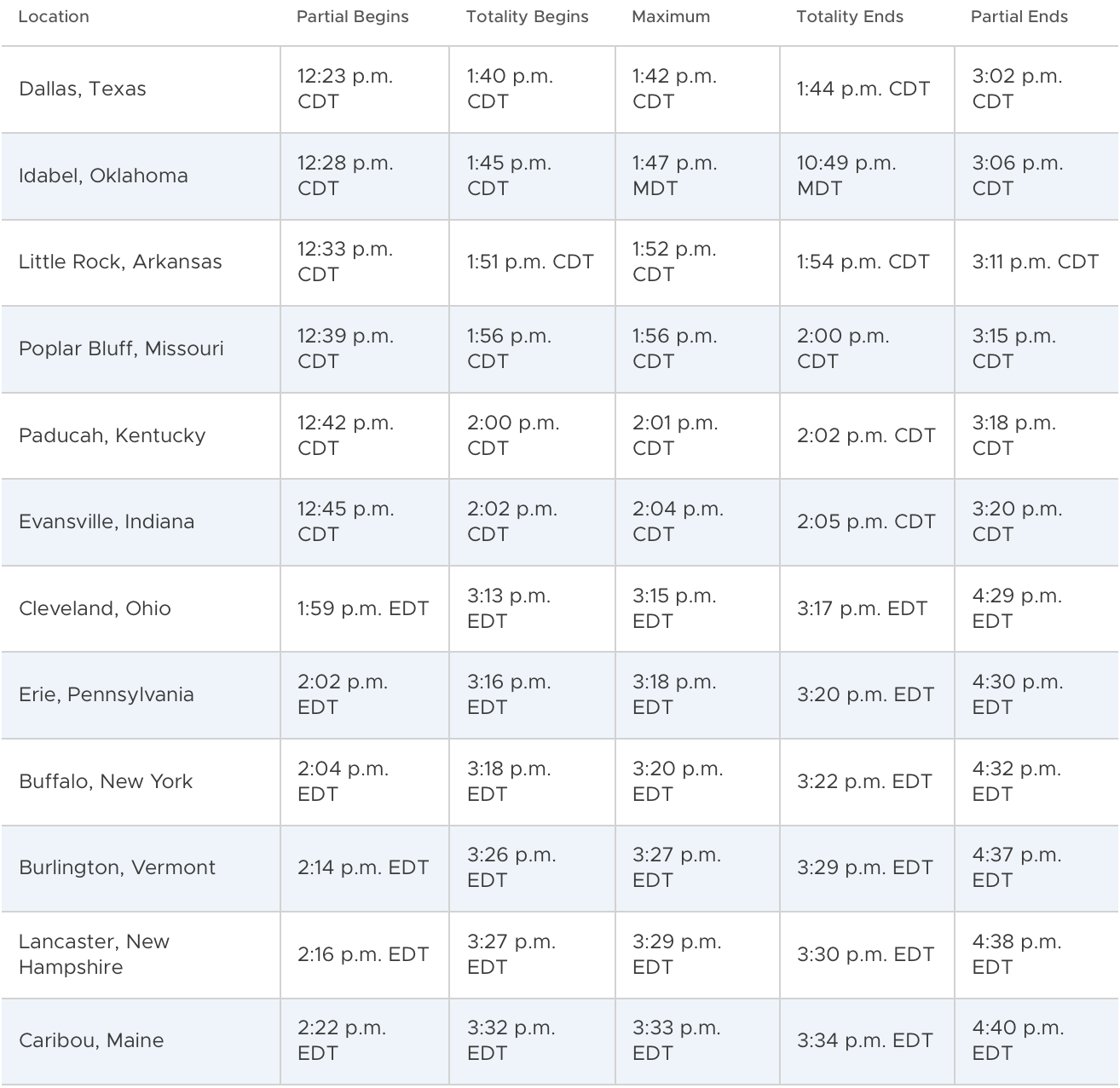
Eclipse Timetable, Credit: NASA Solar System Exploration, Our Galactic Neighborhood, https://mynasadata.larc.nasa.gov/sites/default/files/inline-images/eclipse%20timetable.png
- Answer the following questions.
- What location on the path of totality will experience the longest duration of totality?
- What location on the path of totality will experience the shortest duration of totality?
- Where is your location? What will you see at that location on April 8, 2024? For how long will you be able to see it?
- Make a prediction: how does NASA predict the duration of totality in different locations for future solar eclipses?
- Watch this video on Tracing the 2017 Solar Eclipse to learn more about how NASA uses data from past eclipses to predict the locations and times of future solar eclipses.
- Answer the following questions about the video.
- What features of this visualization are driven by data?
- How does Moon topography (mountains and valleys) affect the duration of totality?
- What other variables affect the way an observer views a total solar eclipse from different locations on Earth?
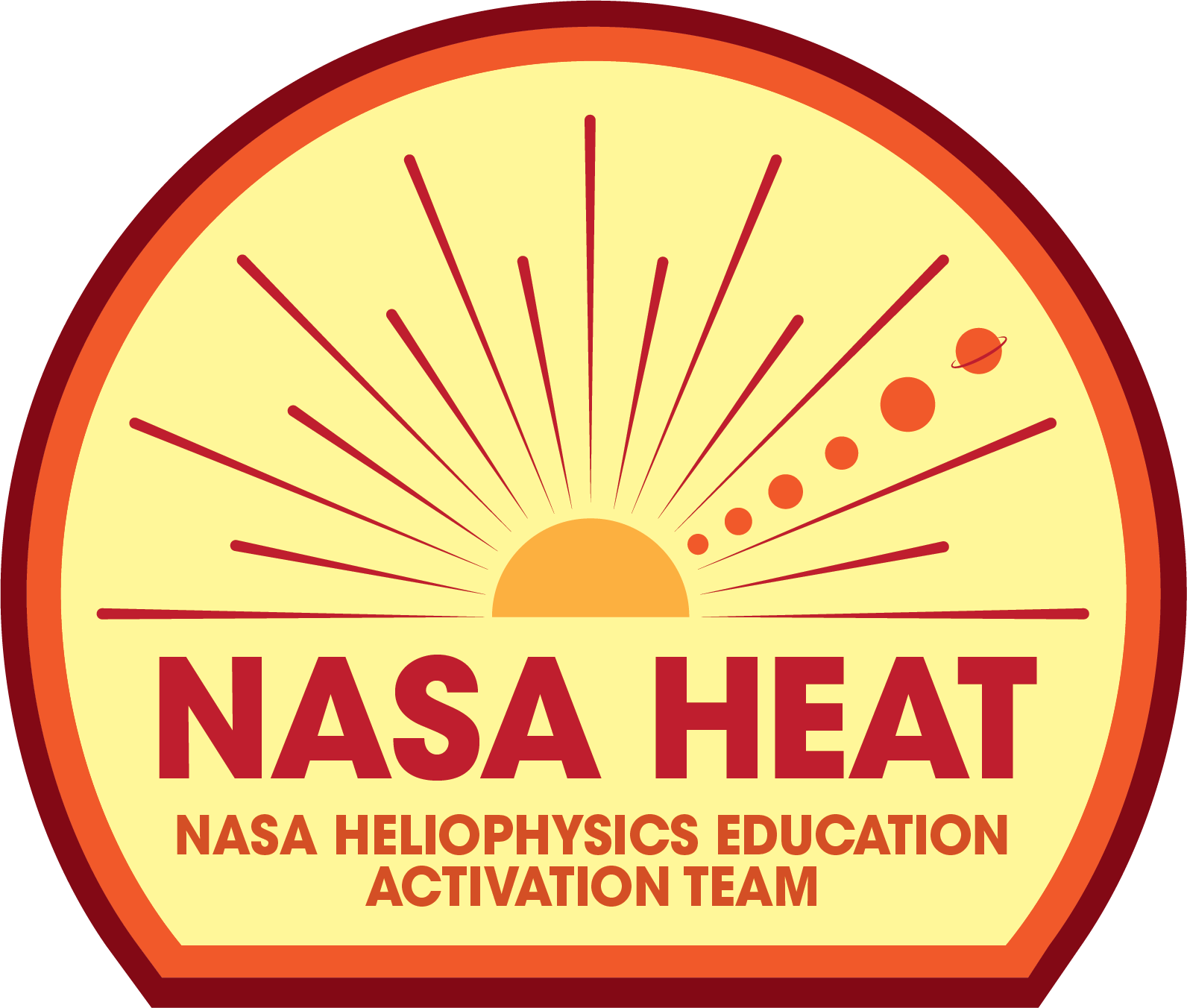
Sources:
- Overview | 2024 Total Eclipse – NASA Solar System Exploration. (n.d.). NASA Solar System Exploration. Retrieved January 29, 2023, from https://solarsystem.nasa.gov/eclipses/future-eclipses/eclipse-2024/
- Tracing the 2017 Solar Eclipse. (2016, December 14). YouTube. Retrieved January 29, 2023, from https://www.youtube.com/watch?v=MJgXaqW3md8
- Where & When | 2024 Total Eclipse – NASA Solar System Exploration. (n.d.). NASA Solar System Exploration. Retrieved April 5, 2023, from https://solarsystem.nasa.gov/eclipses/2024/apr-8-total/where-when/
- Garrison, M. (2023, March 8). SVS - The 2023 and 2024 Solar Eclipses: Map and Data. NASA Scientific Visualization Studio. Retrieved March 19, 2023, from https://svs.gsfc.nasa.gov/5073
Teacher Note
The length of totality also depends on where on the planet’s surface the shadow falls (elevation), how far away the Moon is from Earth, and how far Earth is from the Sun at that time. Both the speed of the Moon in its orbit around Earth, and the speed of the Earth around the Sun, cause the shadow to move across the Earth at different rates. The shape of the orbits of both the Earth and the Moon are elliptical, not circular, causing the speed of the object to change depending on where it is in its orbit. Planetary bodies speed up when they are closer to the object they are orbiting (Kepler’s Laws of Planetary Motion). The speed at which Earth is rotating also affects how the shadow moves across the Earth.
Teachers, these mini lessons/student activities are perfect "warm up" tasks that can be used as a hook, bell ringer, exit slip, etc. They take less than a class period to complete. Learn more on the "My NASA Data What are Mini Lessons?" page.
Teachers who are interested in receiving the answer key, please complete the Teacher Key Request and Verification Form. We verify that requestors are teachers prior to sending access to the answer keys as we’ve had many students try to pass as teachers to gain access.

